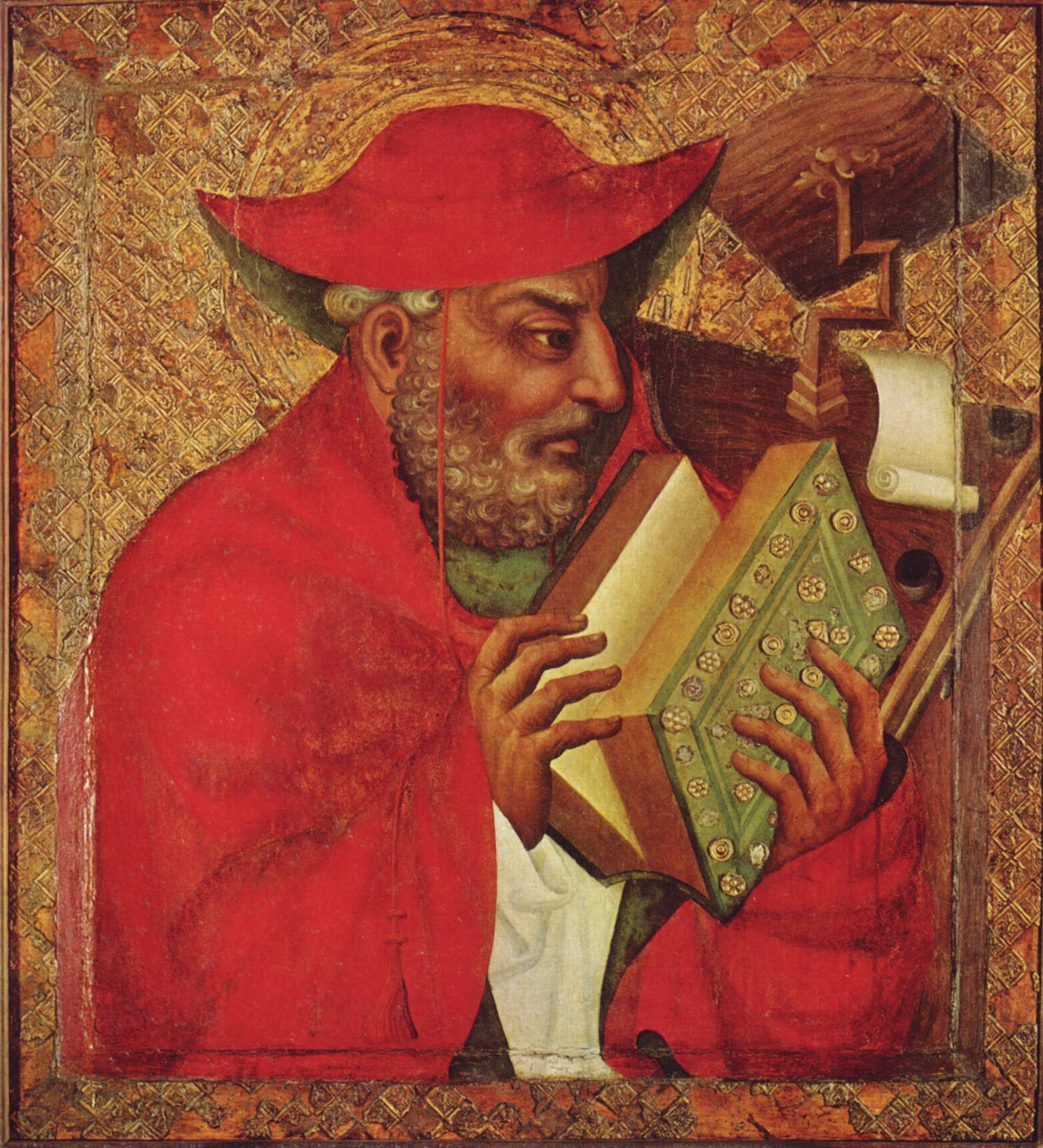|
Arnobius
Arnobius (died c. 330) was an early Christian apologist of Berber origin during the reign of Diocletian (284–305). According to Jerome's ''Chronicle,'' Arnobius, before his conversion, was a distinguished Numidian rhetorician at Sicca Veneria (El Kef, Tunisia), a major Christian center in Proconsular Africa, and owed his conversion to a premonitory dream. However, Arnobius writes dismissively of dreams in his surviving book. According to Jerome, to overcome the doubts of the local bishop as to the earnestness of his Christian belief he wrote (c. 303, from evidence in IV:36) an apologetic work in seven books, which St. Jerome calls but which is entitled in the only (9th-century) manuscript that has survived. Jerome's reference, his remark that Lactantius was a pupil of Arnobius and the surviving treatise are all the surviving facts about Arnobius. was composed in response to arguments justifying Diocletian's persecution of Christians by claiming that Christians had brough ... [...More Info...] [...Related Items...] OR: [Wikipedia] [Google] [Baidu] |
Arnobius The Younger
Arnobius the Younger () was a Christian priest or bishop in Gaul, who wrote from Rome around the year 460.''Ancient Christian Commentary on Scripture'', Old Testament volume VII, edited by Craig A. Blaising and Carmen S. Harden He is the author of a mystical and allegorical commentary on the Psalms, first published by Erasmus in 1522, and by him attributed to the elder Arnobius. It has been frequently reprinted, and in the edition of De la Barre, 1580, is accompanied by some notes on the Gospels by the same author. More recently, '' CCSL 25'' has produced a critical edition of his commentary. To him has sometimes been ascribed the anonymous treatise, ''Arnobii catholici et Serapionis conflictus de Deo trino et uno ... de gratiae liberi arbitrii concordia'', which was probably written by a follower of Augustine. The opinions expressed in his commentary have been called semi-Pelagian, probably due to his opposition to Augustine's doctrine of predestination. Rondeau infers an Afric ... [...More Info...] [...Related Items...] OR: [Wikipedia] [Google] [Baidu] |
Sicca Veneria
El Kef ( '), also known as ''Le Kef'', is a city in northwestern Tunisia. It serves as the capital of the Kef Governorate. El Kef is situated to the west of Tunis and some east of the border between Algeria and Tunisia. It has a population of (2004 census). The old town is built on the cliff face of the table-top Jebel Dyr mountain. El Kef was the provisional capital of Tunisia during World War II. It was the command centre of the Front de Libération Nationale during the Algerian War of Independence against the French in the 1950s. The Sidi Bou Makhlouf Mausoleum entombs the patron saint of the city. Geography The highest-elevated city of Tunisia, at , its metropolitan area reaches of which lie within the interior of the old walled Medina quarter. The municipality of El Kef is shared between two national delegates, East Kef and West Kef, which correspond to the two municipal boroughs. History Etymology First known by the name of Sicca during the Cartha ... [...More Info...] [...Related Items...] OR: [Wikipedia] [Google] [Baidu] |
Lactantius
Lucius Caecilius Firmianus Lactantius () was an early Christian author who became an advisor to Roman emperor Constantine I, guiding his Christian religious policy in its initial stages of emergence, and a tutor to his son Crispus. His most important work is the '' Institutiones Divinae'' ("The Divine Institutes"), an apologetic treatise intended to establish the reasonableness and truth of Christianity to pagan critics. He is best known for his apologetic works, widely read during the Renaissance by humanists, who called Lactantius the "Christian Cicero". Also often attributed to Lactantius is the poem '' The Phoenix'', which is based on the myth of the phoenix from Egypt and Arabia. Though the poem is not clearly Christian in its motifs, modern scholars have found some literary evidence in the text to suggest the author had a Christian interpretation of the eastern myth as a symbol of resurrection. Biography Lactantius was of Punic or Berber origin, born into a family that ... [...More Info...] [...Related Items...] OR: [Wikipedia] [Google] [Baidu] |
De Viris Illustribus (Jerome)
''De Viris Illustribus'' (''On Illustrious Men'') is a collection of short biographies of 135 authors, written in Latin, by the 4th-century Latin Church Father Jerome. He completed this work at Bethlehem in 392–393 AD. The work consists of a prologue plus 135 chapters, each consisting of a brief biography. Jerome himself is the subject of the final chapter. A Greek version of the book, possibly by the same Sophronius who is the subject of Chapter 134, also survives. Many biographies take as their subject figures important in Christian Church history and pay especial attention to their careers as writers. It "was written as an apologetic work to prove that the Church had produced learned men." The book was dedicated to Flavius Lucius Dexter, who served as high chamberlain to Theodosius I and as praetorian prefect to Honorius. Dexter was the son of Saint Pacianus, who is eulogized in the work. Contents Listed below are the subjects of Jerome's 135 biographies. The nu ... [...More Info...] [...Related Items...] OR: [Wikipedia] [Google] [Baidu] |
Africa (province)
Africa was a Roman province on the northern coast of the continent of Africa. It was established in 146 BC, following the Roman Republic's conquest of Carthage in the Third Punic War. It roughly comprised the territory of present-day Tunisia, the northeast of Algeria, and the coast of western Libya along the Gulf of Sidra. The territory was originally and still is inhabited by Berbers, known in Latin as the Numidae and Maurii'','' indigenous to all of North Africa west of Egypt. In the 9th century BC, Semitic-speaking Phoenicians from the Levant built coastal settlements across the Mediterranean to support and expand their shipping networks. In the 8th century BC, the settlement of Carthage became the predominant Phoenician colony. Rome began expanding into the Province of Africa after annexing Carthage in 146 BC at the end of the Punic Wars, and later into Numidia in 25 BC, establishing Roman colonies in the region. Africa was one of the wealthiest provinces ... [...More Info...] [...Related Items...] OR: [Wikipedia] [Google] [Baidu] |
Platonism
Platonism is the philosophy of Plato and philosophical systems closely derived from it, though contemporary Platonists do not necessarily accept all doctrines of Plato. Platonism has had a profound effect on Western thought. At the most fundamental level, Platonism affirms the existence of abstract objects, which are asserted to exist in a third realm distinct from both the sensible external world and from the internal world of consciousness, and is the opposite of nominalism." Philosophers who affirm the existence of abstract objects are sometimes called platonists; those who deny their existence are sometimes called nominalists. The terms "platonism" and "nominalism" have established senses in the history of philosophy, where they denote positions that have little to do with the modern notion of an abstract object. In this connection, it is essential to bear in mind that modern platonists (with a small 'p') need not accept any of the doctrines of Plato, just as modern nomina ... [...More Info...] [...Related Items...] OR: [Wikipedia] [Google] [Baidu] |
Barbarians
A barbarian is a person or tribe of people that is perceived to be primitive, savage and warlike. Many cultures have referred to other cultures as barbarians, sometimes out of misunderstanding and sometimes out of prejudice. A "barbarian" may also be an individual reference to an aggressive, brutal, cruel, and insensitive person, particularly one who is also dim-witted, while cultures, customs and practices adopted by peoples and countries perceived to be primitive may be referred to as "barbaric". The term originates from the (; ). In Ancient Greece, the Greeks used the term not only for those who did not speak Greek and follow classical Greek customs, but also for Greek populations on the fringe of the Greek world with peculiar dialects. In Ancient Rome, the Romans adapted and applied the term to tribal non-Romans such as the Germanics, Celts, Iberians, Helvetii, Thracians, Illyrians, and Sarmatians. In the early modern period and sometimes later, the Byzantine Greeks ... [...More Info...] [...Related Items...] OR: [Wikipedia] [Google] [Baidu] |
Christianity
Christianity is an Abrahamic monotheistic religion, which states that Jesus in Christianity, Jesus is the Son of God (Christianity), Son of God and Resurrection of Jesus, rose from the dead after his Crucifixion of Jesus, crucifixion, whose coming as the Messiah#Christianity, messiah (Christ (title), Christ) was Old Testament messianic prophecies quoted in the New Testament, prophesied in the Old Testament and chronicled in the New Testament. It is the Major religious groups, world's largest and most widespread religion with over 2.3 billion followers, comprising around 28.8% of the world population. Its adherents, known as Christians, are estimated to make up a majority of the population in Christianity by country, 157 countries and territories. Christianity remains Christian culture, culturally diverse in its Western Christianity, Western and Eastern Christianity, Eastern branches, and doctrinally diverse concerning Justification (theology), justification and the natur ... [...More Info...] [...Related Items...] OR: [Wikipedia] [Google] [Baidu] |
Monotheism
Monotheism is the belief that one God is the only, or at least the dominant deity.F. L. Cross, Cross, F.L.; Livingstone, E.A., eds. (1974). "Monotheism". The Oxford Dictionary of the Christian Church (2 ed.). Oxford: Oxford University Press. A distinction may be made between exclusive monotheism, in which the one God is a singular existence, and both inclusive and pluriform monotheism, in which multiple gods or godly forms are recognized, but each are postulated as extensions of the same God. Monotheism is distinguished from henotheism, a religious system in which the believer worships one god without denying that others may worship different gods with equal validity, and monolatry, monolatrism, the recognition of the existence of many gods but with the consistent worship of only one deity. The term ''monolatry'' was perhaps first used by Julius Wellhausen. Monotheism characterizes the traditions of Abrahamic religions, Abrahamic religions such as Judaism, Samaritanism, Christi ... [...More Info...] [...Related Items...] OR: [Wikipedia] [Google] [Baidu] |
Straw Men
A straw man fallacy (sometimes written as strawman) is the informal fallacy of refuting an argument different from the one actually under discussion, while not recognizing or acknowledging the distinction. One who engages in this fallacy is said to be "attacking a straw man". The typical straw man argument creates the illusion of having refuted or defeated an opponent's proposition through the covert replacement of it with a different proposition (i.e., "stand up a straw man") and the subsequent refutation of that false argument ("knock down a straw man"), instead of the opponent's proposition. Straw man arguments have been used throughout history in polemical debate, particularly regarding highly charged emotional subjects. Straw man tactics in the United Kingdom may also be known as an Aunt Sally Aunt Sally is a traditional England, English game usually played in Pub game, pub gardens and fairgrounds, in which players throw sticks or battens at a ball, known as a 'dolly' ... [...More Info...] [...Related Items...] OR: [Wikipedia] [Google] [Baidu] |






